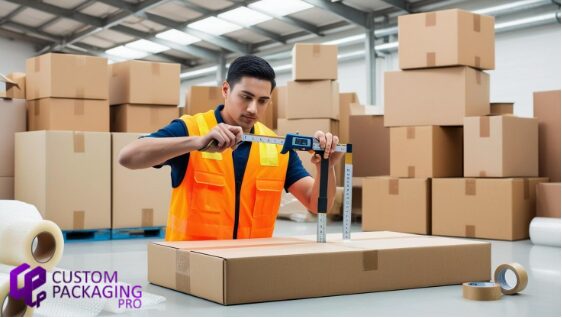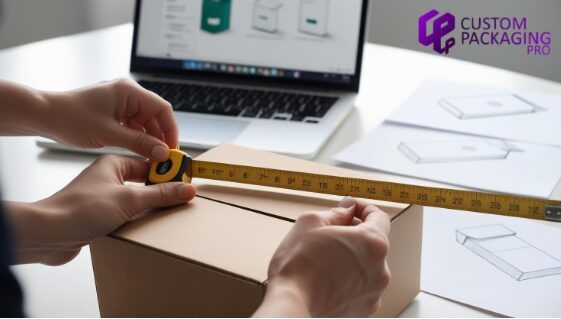In product branding and delivery, package dimensions length width height are more than getting a box measured. It’s an integral aspect of designing functional, cost-effective, and attractive packaging that matches the product and the logistical process. Whether it’s a small local company shipping handmade products or a large international retailer shipping bulk, accurate packaging dimensions are what count in protection, presentation, and price.
This article delves into the basics of package sizes and how understanding the size of a package affects everything from shipping price to shelf visibility.
Why Package Dimensions Matter
Each item shipped, stored, or sold arrives in a container—its packaging. The size of that packaging determines how it’s protected, where it goes on the shelves, how much it will cost to ship, and even how customers view it.
The following are some significant reasons why sizing matters:
- Shipping Charges: The majority of courier businesses estimate shipping charges using dimensional weight, particularly for light but large packages.
- Space Efficiency: Retail shelves and warehouses need space efficiency. Inaccurate dimensions will cause inefficiency and cost.
- Product Safety: Too large, and the product will rattle around. Too small and it could be damaged.
- Customer Satisfaction: Packaging with the proper size is deliberate and high-end.
Understanding Length, Width, and Height
One of the most frequently asked questions by packaging professionals is, “What is the proper order of dimensions?” The standard accepted order is:
Length – the longest edge of the box (left to right)
Width – the shorter edge of the base (front to back)
Height – the vertical dimension (bottom to top)
This measurement length × Width × Height (L × W × H) is not only common to e-commerce and logistics but also adopted by packaging companies and printers.
Measuring Package Dimensions
Box measurement may appear easy, but minor inaccuracies can lead to expensive mistakes. Here is how to do it correctly:
Begin with the Length – Have the box in front of you. Measure the base’s longest side.
Measure the Width – Now take the side next to the length (the shorter base measurement).
Measure the Height – The vertical side that runs from base to top.
In shipping and storing, always measure internal dimensions to guarantee the product has a snug fit within the box. In determining external dimensions for courier delivery, consider the thickness of materials, too.
Packaging Types That Rely on Precise Dimensions
Various types of packaging require particular attention to size:
Mailer Boxes: Used frequently in subscription services or DTC brands, mailer boxes need to secure products snugly so that there is no movement in transit.
Retail Product Boxes: In addition to fitting perfectly into the product, they also need to accommodate retail shelf requirements.
Custom Inserts: With foam or cardboard inserts, precision of dimensions becomes even more important.
E-commerce Shipping Boxes: Proper dimensions minimize void fill, save money, and diminish environmental footprint.
If you’re navigating through these choices and would like a more customized solution, reach out to Custom Packaging Pro for information on packaging size and structural design.
How Box Dimensions Affect Cost
Knowing length, width, and height is more than just functional—there’s also a budget aspect to it.
Dimensional Weight (DIM Weight): Carriers calculate the billable weight using the formula (L × W × H) ÷ divisor. When your package size is too big, you might pay more despite it being light.
Material Costs: Big packaging means more material, and more material means more expense. Underestimating size, on the other hand, can result in product damage.
Volume Discounts: Packaging providers usually offer discounts on bulk purchases, but having exact dimensions ensures you purchase the correct size in bulk.
When to Personalize Your Packaging Dimensions
Though regular boxes are a time-saver, custom packaging provides strategic advantages, particularly for businesses aiming for shelf presence, protection, and branding consistency. Here’s when custom dimensions are worthwhile:
Unconventional Product Sizes: Irregular products require custom boxes to prevent unnecessary void fill.
Premium Presentation Objectives: Unboxing experiences are enriched by custom dimensions and can be aligned with your brand vision.
Retail Needs: Shelf distance and stacking fit usually demand boxes to meet certain dimensions.
Custom Packaging Pro is a useful guide for those new to packaging customization. If you’d like to know more about packaging dimensions, reach out to Custom Packaging Pro so you can learn about what structure and sizing is best for your product.
Common Mistakes to Avoid When Measuring Boxes
Even established companies occasionally commit expensive measurement mistakes. Here are some to be aware of:
Taking Outside Measurements Rather Than Inside Measurements: This can cause snug fits or useless packaging.
Omitting Product Accessories: Consider inserts, instructions, or other parts when calculating space requirements.
Over-Sizing: Larger is not necessarily better—it can raise expenses and lower sustainability.
Incorrect Unit Conversion: Getting inches, centimeters, and millimeters confused can sabotage entire production runs.
If you’re unsure, working with an experienced packaging provider can prevent these missteps.
Size Does Matter in Packaging
Having the right length, width, and height can make the difference between a damaged delivery and a beautifully presented product. From shipping optimization to brand image, precise dimensions are the foundation of packaging success.
If you require exactly-sized boxes, consider Custom Packaging Pro‘s services. Their packaging experts recognize the importance of dimensions in structural soundness, branding, and supply chain effectiveness—and they’re here to assist businesses of every size in finding their ideal fit.
FAQs
- What is the correct order of dimensions: length, width, height?
The standard order for box or package dimensions is Length × Width × Height (L × W × H). Length is the longest side, width is the shorter side of the base, and height is the vertical side from base to top.
- How do you measure length, width, and height of a box?
Place the box on a flat surface. Measure the longest side first (length), then the adjacent side (width), and finally the vertical side from bottom to top (height). Always use internal dimensions for product fit.
- Why is it important to know length, width, and height for packaging?
Knowing precise dimensions ensures proper product fit, reduces shipping costs, minimizes material waste, and improves customer experience. It also helps avoid dimensional weight charges from couriers.
- Is height the same as depth in packaging?
Not always. In packaging, height usually refers to the vertical dimension when a box is placed upright, while depth can sometimes be used interchangeably with height depending on orientation.
- What units are used for measuring length, width, and height?
Packaging dimensions are typically measured in inches (in) or millimeters (mm) depending on the region. It’s crucial to use consistent units and clarify with manufacturers or shipping partners.


































